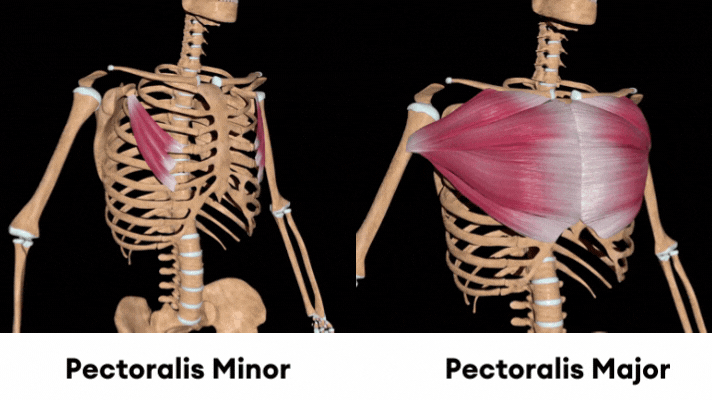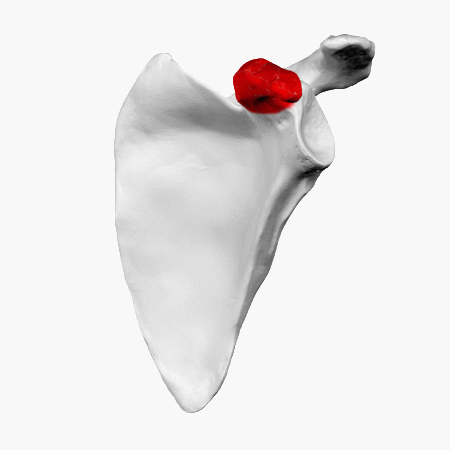What are the ‘pecs’ and what do they do?
The ‘pecs’ or, the pectoralis muscles, as they are formally known, connect the chest bone (the sternum) to the upper arm (the humerus).
The action of the ‘pecs’ is to flex, adduct, extend, depresses and internally rotate the shoulder. As you can tell, they are quite a keystone to shoulder movement and overall posture!

Where do they attach, and why does that matter?
The pectoralis major is a thick, fan-shaped muscle that originates midway along the collar bone (the clavicle) and runs down all the way down the chest bone (sternum) until around the 7th rib. From this wide platform, it fans out to insert into the bicipital sulcus at the top of the humerus.
The pectoralis minor is a thin, triangular-shaped muscle that originates from the 3rd-5th ribs, and inserts into the coracoid process, which is the most forward-facing point of the shoulder blade (scapula).

Image from BodyParts3D ,made by DBCLS.
The attachment points of the pecs are highly significant. This is because, if our pecs become progressively tighter through; prolonged sitting posture, poor ergonomics at our computers, extended periods of texting, too much chest press exercises, and not enough upper back strengthening… to name a few, the pec muscles will pull the top of the shoulder (the humerus) forwards and inwards – causing that infamous ’rounded shoulders’ look.
Additionally, this is the point at which your injury risk exponentially increases. This is because;
- The rotator cuffThe rotator cuff is a group of muscles and tendons that attach the shoulder blade to the upper arm b More muscles alter their share of the load, with tightness (of pecs) leading to strength, and elongation (of rhomboids/back mucles) leading to weakness = increasing likelihood of rotator cuff tears.
- The subacromial space gets smaller, which then will lead to compression of tendons, and bursa as the arm moves.
- Degradation of the rotator cuff occurs, when they are continuously overloaded, causing frayed tendons (like rope that’s worn into), until either surgery is required, or intensive Physio rehab to prevent the first option!
The solution?
- Ensure those dastardly ergonomics at your desk are optimal.
- Strengthen your upper back muscles by completing low rows and banded external rotationThe range of shoulder external rotation is one of the most important metrics in the field of general More exercises.
- Stretch those pecs regularly. (prevention is better than cure, trust me!)
References
https://www.ncbi.nlm.nih.gov/pmc/articles/PMC4836557/